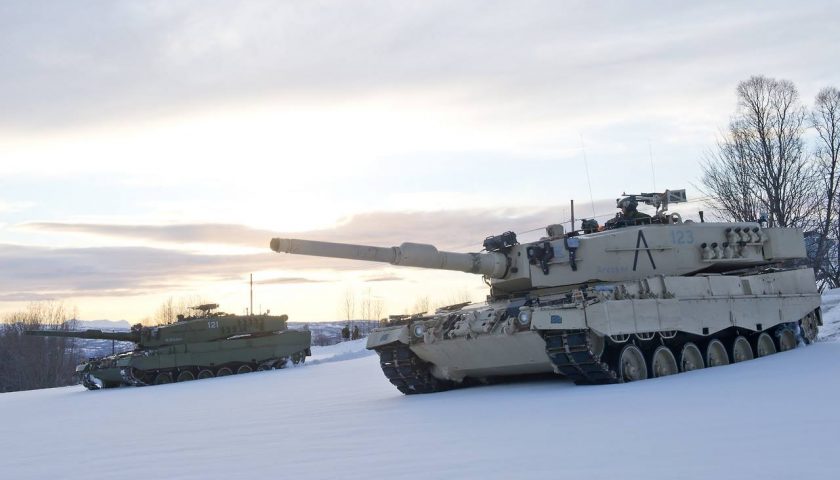Last February, President Emmanuel Macron suggested, during his official visit to Poland, that Paris and Berlin could accept Warsaw in MGCS program, intended to design and manufacture the future replacement for the French Leclerc tanks and Leopard 2 German by 2035. But since then, nothing seems to have changed in this matter. On the contrary, echoes from Poland would now suggest that the Polish participation in the Franco-German program was no longer relevant. South Korean Hyundai now deploys treasures of persuasion to get Warsaw interested in its new K2 Black battle tank Panther, whose construction resumed a few months ago.
The objective for the Polish armies is to initially replace the approximately 500 T72 and PT91 heavy tanks inherited from the Soviet period, and whose operational performance is beginning to show the weight of the years, despite the modernization phases they have undergone. Later, it will also be necessary to replace the approximately 250 tanks Leopard 2 A4/5 acquired second-hand from the German army, and which will have to leave active service over the next decade. The overall volume of 750 to 800 tanks that Poland actually represents has, in fact, enough to stimulate appetites, especially since very few countries in the world plan to acquire such a fleet of tanks in the decade which come.

Warsaw has apparently ended with its will to "do everything on its own", as was the case a few years ago, when the country's authorities mistakenly believed that the defense industry polish could design alone a new generation combat tank, the PL-01. For this, the Polish authorities turned to the South Korean Hyundai Rotem, and its K2 Black heavy tank Panther, and initiated bilateral discussions in January this year, with a view to signing an industrial partnership to build and export the South Korean tank. Warsaw believes that several Eastern European countries, such as Slovakia or the Czech Republic, could be interested in this armored vehicle.
Designed between 1995 and 2008 to take over from the K1, the K2 heavy battle tank entered service in 2014 in the South Korean Army, which today has a fleet of around a hundred armored vehicles, of the 260 ordered to date. With a mass of 55 tonnes, the K2 is more in the category of mobile heavy tanks, like the French Leclerc or the Russian T90, and not in that of super-heavy tanks, like the American M1 Abrams or the Leopard 2 German. In addition to its composite ceramic armor, NERA (multi-impact) reactive armor is added, as well as a Soft-Kill protection system including radar jammer, laser detector and smoke launcher. It should also soon be equipped with a South Korean hard-kill system, designed specifically for the tank. Its 120 mm 55 caliber cannon can fire all types of standard Western shells, as well as the Korean Smart Top-Attack Munition or KSTAM, which allows long-range ballistic fire (up to 8 km). ), the ammunition being equipped with a parachute and a seeker to find its target.

The production of the K2 was suspended between 2017 and 2019, following the difficulties encountered by the South Korean industry to provide a transmission and an engine powerful and reliable enough to equip the armored vehicle. The first series of 100 tanks delivered between 2015 and 2017 was, for its part, equipped with German components. In May 2019, production could resume, both for the second Batch equipped with a South Korean transmission and a German engine, and for the third Batch, this time equipped with entirely national components. In its final version, the K2 is fitted with a 27-cylinder liquid-cooled Doosan DV12K engine delivering a power of 1.500 hp, offering a satisfactory power-to-weight ratio of 27 hp per ton, and allowing the tank to reach top speed. 70 km on the road, and 50 km on unfinished ground.

Like the Turkish Altay tank, derived from the K2 from which it takes several components including the propulsion system, the Black Panther arrives on a growing battle tank market, while, at the same time, Western supply in this area is at its lowest. Indeed, among the traditional manufacturers of European heavy armored vehicles, only Germany remains today and its very heavy, very expensive, and very efficient Leopard 2 A7+ which is able to respond to a new order. Like Germany, France and Great Britain have in fact dismantled their Leclerc and Challenger 2 lines for many years, but KMW has retained a limited production capacity allowing it to respond to recent contracts, such as the Hungarian order of 2019 for 44 Leopard 2A7+ and 12 Leopard X. At the same time, Russia, the main potential threat in Europe which may require the use of heavy tanks, has several lines to produce T90s and now new T14s, or to modernize T72s and T80s in the fleet. This situation created a real "call for air" in Europe, and in particular in Eastern Europe, for a new model of modern and "inexpensive" tanks, the K2 being offered around 8,5m € per unit. . It could well be that the Poland-South Korea couple is now in a strong position in this market.


[…] the Polish defense industry without much success, Warsaw turned, in September 2020, to one of the most emerging Defense Technological Industrial Base (BITD) […]